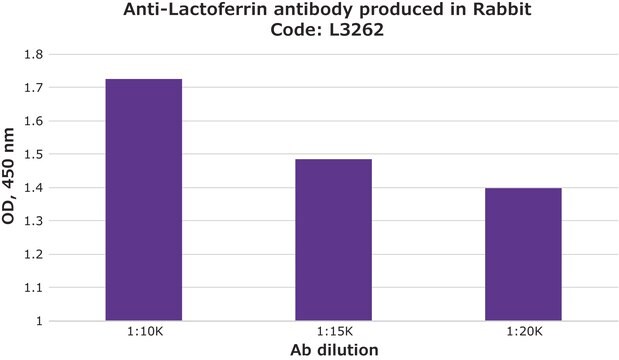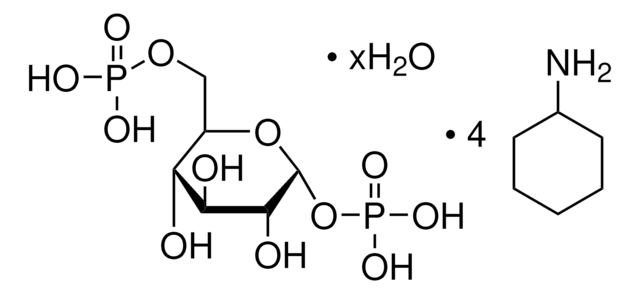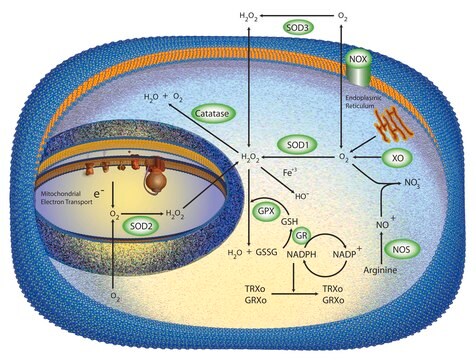推荐产品
品質等級
化驗
≥98% (HPLC)
形狀
solid
顏色
white
溶解度
H2O: 22 mg/mL
起源
GlaxoSmithKline
SMILES 字串
Cl[H].Cl[H].Cl[H].Nc1nccc(n1)-c2c(ncn2C3CCNCC3)-c4ccc(F)cc4
InChI
1S/C18H19FN6.3ClH/c19-13-3-1-12(2-4-13)16-17(15-7-10-22-18(20)24-15)25(11-23-16)14-5-8-21-9-6-14;;;/h1-4,7,10-11,14,21H,5-6,8-9H2,(H2,20,22,24);3*1H
InChI 密鑰
IPFBHUGKKONHFR-UHFFFAOYSA-N
應用
生化/生理作用
特點和優勢
儲存類別代碼
11 - Combustible Solids
水污染物質分類(WGK)
WGK 3
閃點(°F)
Not applicable
閃點(°C)
Not applicable
個人防護裝備
Eyeshields, Faceshields, Gloves, type P2 (EN 143) respirator cartridges
商品
The mitogen-activated protein kinase (MAPK) family consists of both stress activated (SAPK) and mitogen-activated (MAPK) protein kinases. They form a network of signal transduction cascades that mediate cellular responses to a diverse range of stimuli, including growth factors, chemical or osmotic stress, irradiation, bacterial infection and proinflammatory cytokines.
我们的科学家团队拥有各种研究领域经验,包括生命科学、材料科学、化学合成、色谱、分析及许多其他领域.
联系技术服务部门








